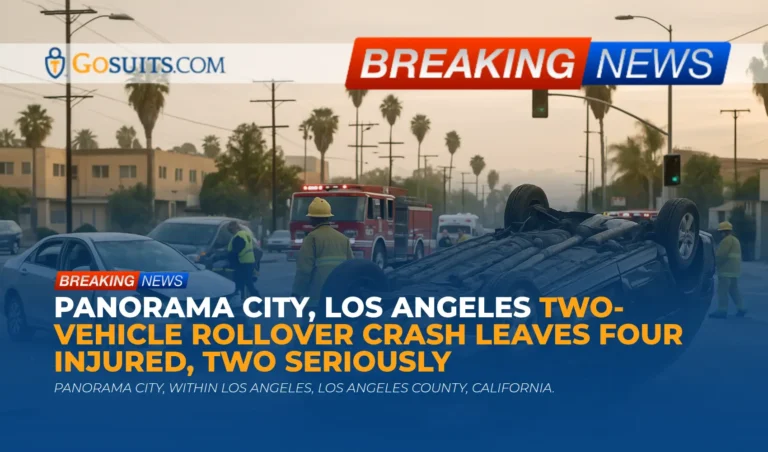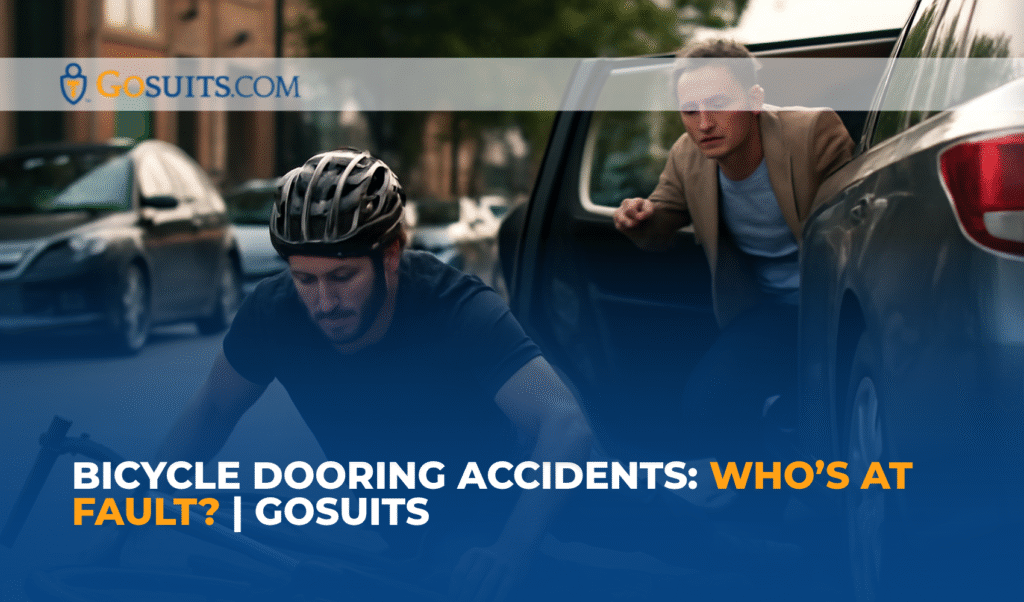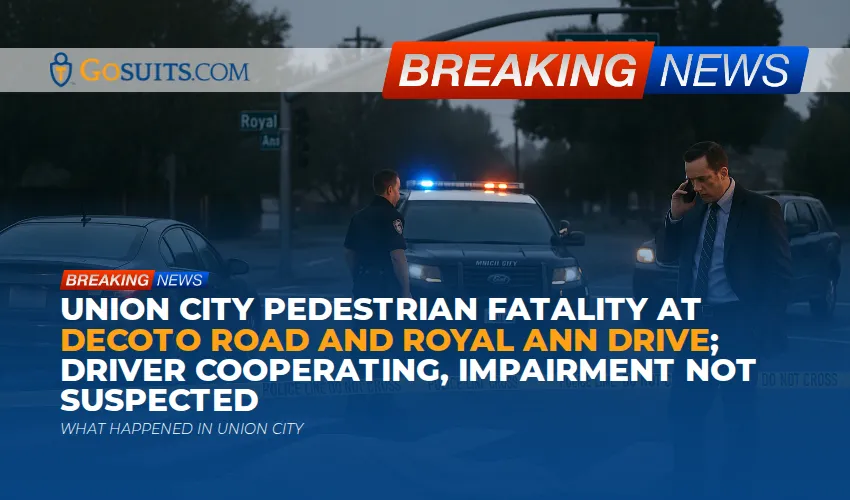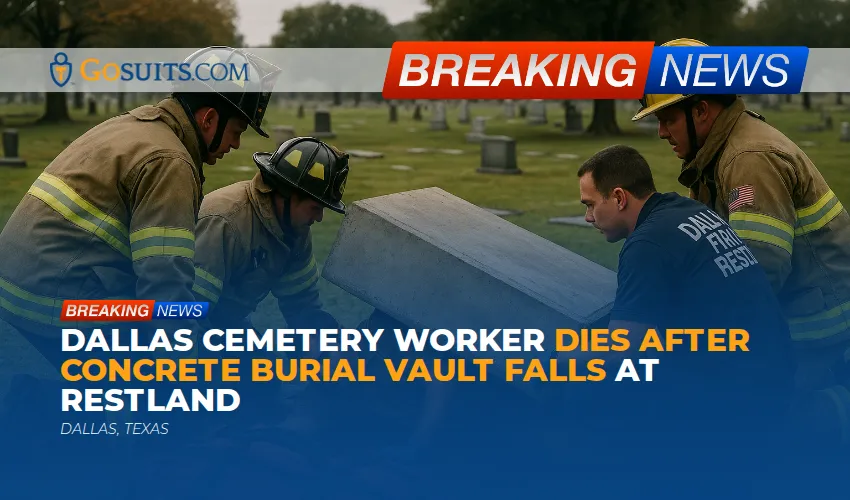- Overview
- What happened and what is known
- Reported injuries and emergency response context
- Safety context and rollover crash risk
- Key California rules that often apply after injury crashes
- Insurance issues and practical next steps
- Evidence to preserve right away
- How to get official reports and records in Los Angeles County
- Potential civil liability considerations
- Common categories of losses in California injury cases
- Timing, deadlines, and why acting promptly matters
- Commentary from Gosuits Panorama City, California Personal Injury Attorney
- Important next steps to stay protected
Overview
Early Friday morning, October 3, 2025, a two-vehicle collision in Panorama City, an area within the City of Los Angeles in Los Angeles County, led to a rollover. According to initial reports, two people suffered serious injuries and two others had minor injuries. The crash involved two vehicles and occurred on a public roadway in Panorama City. Local authorities responded, treated the injured at the scene, and transported those needing higher-level care to area hospitals. An investigation into the collision’s cause is underway.
When multi-occupant vehicles roll over, injury patterns can be severe. While many facts remain under review, it is common for these incidents to trigger detailed traffic collision investigations, vehicle inspections, and scene documentation to determine how and why the rollover occurred and whether driver error, roadway conditions, or vehicle issues contributed.
What happened and what is known
Based on the information currently available:
- Location — Panorama City, within Los Angeles, Los Angeles County, California.
- Date and time — Friday morning, October 3, 2025.
- Crash type — Two-vehicle collision with at least one vehicle rolling over.
- Injuries — Two people reported as seriously injured and two with minor injuries.
- Response — Law enforcement and emergency medical personnel responded. An investigation is in progress.
Officials typically examine vehicle positions, skid or yaw marks, debris fields, point-of-impact evidence, witness statements, any dashcam or security footage, and data potentially available from event data recorders. In urban neighborhoods like Panorama City, nearby businesses and residences sometimes have cameras that may have captured critical moments before impact.
At this stage, no public information about driver ages, suspected impairment, or traffic citations has been provided. It is important to avoid speculation until agencies release verified findings.
Reported injuries and emergency response context
The report of two serious and two minor injuries suggests a multi-patient triage effort at the scene. In rollover crashes, common injuries include head and facial trauma, fractures, internal injuries from blunt force, spinal trauma, and lacerations. Even where injuries initially seem minor, delayed symptoms are common, including concussion-related effects, neck and back pain, or abdominal discomfort that can indicate internal injury. Early medical evaluation and follow-up are pivotal for both health and documentation.
Emergency responders usually stabilize vehicles, check for fuel leaks, provide cervical spine precautions when indicated, and coordinate transport based on injury severity and hospital capacity. In Los Angeles, paramedics often distribute patients among trauma centers and community hospitals to match the level of care required.
Safety context and rollover crash risk
Rollover collisions are a small share of total crashes but account for a disproportionate share of severe injuries. National safety guidance emphasizes that:
- Rollover risk is linked to speed, road departure, and tripping events. Vehicles are more likely to roll when they strike a curb, soft shoulder, or another vehicle at certain angles, or when they slide sideways and “trip.”
- Seat belts dramatically reduce ejection risk. Ejection during a rollover is strongly associated with fatal and severe injury outcomes. Consistent seat belt use is one of the most effective protections in rollovers.
For more on rollover safety, see the National Highway Traffic Safety Administration’s guidance at NHTSA Rollover Safety. For information on seat belt effectiveness, see NHTSA Seat Belts.
Key California rules that often apply after injury crashes
Collision reporting and DMV notice
- Driver reporting to police or CHP. When a crash results in injury or death, California Vehicle Code section 20008 requires a driver to report the collision to the police department or to the California Highway Patrol within 24 hours if the crash was not already investigated by an officer. Source: Cal. Veh. Code § 20008.
- DMV SR-1 within 10 days. California law requires filing a DMV Form SR-1 within 10 days for any crash with injury, death, or property damage above the statutory threshold. See the DMV’s page on the SR-1 process: DMV SR-1. The statutory basis includes Vehicle Code section 16000. Source text: Cal. Veh. Code § 16000.
Negligence and comparative fault
- General duty of care. In California, everyone is responsible for injury caused by lack of ordinary care in managing their person or property. Source: Cal. Civ. Code § 1714.
- Comparative fault. Where multiple parties may share responsibility for a crash, California’s comparative fault doctrine reduces a claimant’s damages by their percentage of fault. This concept is reflected in the Judicial Council’s civil jury instructions. See the Judicial Council’s CACI resources at California Courts CACI.
Deadlines to bring a civil claim
- Personal injury. The general statute of limitations for personal injury in California is two years from the date of injury. Source: Code Civ. Proc. § 335.1.
- Claims involving public entities. If a public entity may be involved, an administrative claim is typically due within six months. Source: Gov. Code § 911.2.
Deadlines can be affected by special facts and exceptions. Early consultation with a qualified attorney helps clarify which time limits apply.
Insurance issues and practical next steps
Rollover crashes often result in significant medical expenses and lost time from work. Insurance coverage sources that may be relevant include the at-fault driver’s liability insurance, medical payments coverage, and uninsured or underinsured motorist coverage if the at-fault vehicle is inadequately insured. California’s minimum auto liability limits increased beginning January 1, 2025. See the DMV’s insurance requirements overview at DMV Insurance Requirements.
Before speaking with any insurance company
- Consult an attorney first. What is said to an adjuster in a recorded statement can be used to minimize a claim later. A free consultation helps people understand rights and obligations before engaging with insurers.
- Do not guess about injuries. Early statements should avoid characterizations like “fine” or “better now.” Medical conditions often evolve. Focus on facts and avoid speculation.
Coordinating claims
- Liability claim. This addresses medical bills, wage loss, and general damages from the at-fault driver’s policy.
- Med Pay. If available under one’s own policy, medical payments coverage can help with initial bills regardless of fault.
- UM/UIM. Uninsured or underinsured motorist coverage may apply if the responsible driver has no coverage or inadequate limits.
- Property damage. Collision coverage or the at-fault driver’s property damage liability may address vehicle repairs or total loss valuation.
For crashes with injuries, filing the DMV SR-1 within 10 days is generally required. See DMV SR-1. Keep copies of all submissions.
Evidence to preserve right away
- Photos and video. Scene photos, vehicle positions, interior compartment intrusion, airbag deployment, seat belt condition, and roadway features such as skid marks, debris, gouges, and curb or median impacts.
- Witness information. Names, phone numbers, and any statements from bystanders or other drivers.
- Vehicle data. Many newer vehicles store pre-crash data in an event data recorder. Securing the vehicle and avoiding repairs until an inspection can be arranged helps preserve this data.
- Medical documentation. Emergency department records, imaging, prescriptions, work restrictions, therapy referrals, and symptom journals.
- Employment records. Pay stubs, time sheets, and employer letters documenting missed work and job duty limitations.
- Personal impacts. A daily log of pain levels, sleep disruption, and activities of daily living helps capture noneconomic impacts over time.

How to get official reports and records in Los Angeles County
Traffic collision reports
- Los Angeles Police Department collision report. Panorama City is within the City of Los Angeles. If LAPD investigated, the collision report can be requested from the Department’s records unit. Requests typically require the report number, date, location, and the requester’s role. Identification may be required. While LAPD’s public portal provides instructions, people can also request in person or by mail through the Department’s Records and Identification Division.
- California Highway Patrol collision report. If the California Highway Patrol handled the scene, collision reports can be requested using CHP’s process at CHP Collision Report Request. Eligibility, fees, and turnaround times are explained by CHP.
Medical examiner records
If an injury incident later becomes a fatality, next of kin can request autopsy and investigator reports from the Los Angeles County Department of Medical Examiner. See the County’s request page for families: LA County Medical Examiner Records.
DMV and reporting
For crashes with injuries or sufficient property damage, the DMV requires an SR-1 submission regardless of fault. Instructions and the form are available at DMV SR-1. Insurance companies do not file the SR-1 for drivers in most cases. Keeping a copy is important.
Hospital and ambulance records
Individuals generally have the right to access their own medical records, including emergency department charts, imaging, and EMS run sheets. Federal guidance on access to medical records is available from the U.S. Department of Health and Human Services at HHS HIPAA Rights to Medical Records.
Potential civil liability considerations
Because this was a two-vehicle rollover, investigators will look at a range of factors that commonly bear on civil liability:
- Right-of-way and signal compliance. Whether one driver failed to yield at an intersection or violated a traffic signal or stop sign.
- Speed and following distance. Excess speed or unsafe following distance can magnify forces that contribute to a rollover.
- Lane changes and turn movements. Unsafe lane changes, sudden turns, or improper passing can precipitate a tripping event.
- Distraction or fatigue. Phone use, in-vehicle distractions, or fatigued driving can impair perception and reaction time.
- Vehicle condition. Tire condition, loading, and suspension issues can affect stability, especially during sudden maneuvers.
- Roadway environment. Curb height, median design, pavement conditions, and work zones may be relevant to the sequence of events.
California allows fault to be apportioned among multiple parties, and a person’s compensation is reduced by any percentage of responsibility assigned to them. See California Courts CACI for the Judicial Council’s general guidance used by juries in civil cases, and California’s general duty rule at Civ. Code § 1714.
Common categories of losses in California injury cases
Financial recovery in civil claims is designed to compensate for harms caused by another’s negligence. Typical categories include:
- Medical expenses. Emergency treatment, imaging, hospitalization, surgery, rehabilitation, physical therapy, medications, and future care needs.
- Lost income and earning capacity. Time missed from work, reduced hours, lost opportunities, and long-term work limitations documented by medical providers and employers.
- Property loss. Vehicle repair or total loss, personal items damaged in the collision, and loss-of-use including reasonable rental car periods.
- Out-of-pocket costs. Transportation to appointments, medical devices, home care assistance, and other collision-related expenses.
- Human harms. Pain, inconvenience, loss of enjoyment, sleep disruption, anxiety, and the toll of living with injuries.
Documentation is key. Keeping organized records from day one often makes a measurable difference in claim evaluation.
Timing, deadlines, and why acting promptly matters
- Statutory deadlines. Many personal injury claims in California must be filed within two years. See CCP § 335.1. Claims involving public entities often require an administrative claim within six months. See Gov. Code § 911.2.
- Evidence fades. Skid marks wear away, vehicles get repaired or salvaged, and witnesses become harder to locate. Early preservation helps ensure fair consideration of the facts.
- Medical documentation. Prompt care creates a clear link between the collision and injuries, which insurers routinely scrutinize.
- Insurance communications. Early adjuster outreach is common. Guidance on what to say and what to avoid can prevent avoidable claim setbacks.
Commentary from Gosuits Panorama City, California Personal Injury Attorney
Our thoughts are with everyone harmed in this Panorama City rollover. Crashes like this are frightening, and the uncertainty that follows can be overwhelming. This overview is shared for educational purposes and general information so community members can better understand the process that often follows a serious collision.
From a civil injury perspective, a two-vehicle rollover raises immediate questions about impact angles, vehicle dynamics, and right-of-way. In dense urban areas, even small errors can have large consequences, especially where curb strikes or sudden swerves can precipitate a rollover. A thorough investigation, including scene measurements and a careful look at both vehicles, is essential to identify the contributing factors fairly and accurately.
It is also important to recognize the dynamic between injured people and insurers. Insurance companies and large corporations manage claims every day, and they train adjusters to collect statements fast, to obtain broad medical authorizations, and to resolve claims quickly and inexpensively. Without guidance, people sometimes provide recorded statements that are later used to cast doubt on injury severity or fault. Others accept early offers before the full scope of medical needs is known. Understanding these pressure points early can help level the playing field.
Free consultations can be valuable because they provide a low-pressure opportunity to understand rights, responsibilities, and next steps before speaking with insurers or signing any forms. There is no substitute for informed decisions when health, employment, and long-term stability are at stake.
Important next steps to stay protected

What to do
- Prioritize medical care and follow-ups. Complete recommended imaging and specialist visits. Keep all discharge instructions and referrals.
- Preserve vehicles and evidence. Before repairs or salvage, consider seeking professional inspection. Save photos and scene details.
- Organize documentation. Create a simple file for medical bills, records, time off work, and out-of-pocket costs.
- Request official records. Obtain the police or CHP report when available. If applicable later, next of kin can request Medical Examiner records.
- Submit required notices. File the DMV SR-1 within 10 days when required. Keep copies of everything.
- Consult a personal injury attorney before dealing with adjusters. A free case review helps clarify fault, coverage, and timing. Statements to insurers can be used later and should be given with care.
Why acting now matters
- Deadlines are strict. California law imposes firm limits on when claims can be brought, with shorter timelines if a public entity is involved.
- Evidence is time-sensitive. Surveillance footage may auto-delete within days. Witnesses move, and physical traces fade.
- Medical trajectory evolves. Early documentation supports appropriate treatment plans and a fair assessment of the harm.
- Insurance dynamics. Early adjuster contact is common. Being prepared helps avoid pitfalls that can reduce the value of a claim.
Where to look for official information
- CHP collision reports: CHP Collision Report Request
- DMV accident reporting: DMV SR-1
- LA County Medical Examiner records for next of kin in fatal cases: Request Records
- NHTSA safety background on rollovers and seat belts: Rollover Safety and Seat Belts






